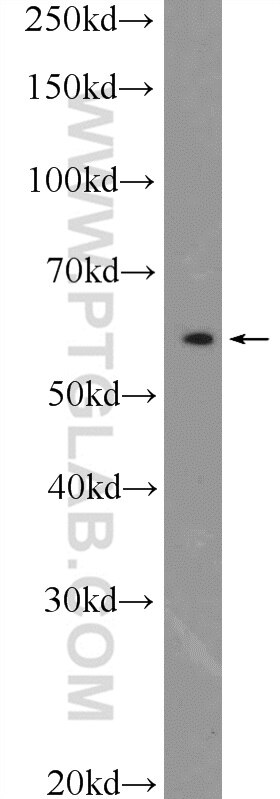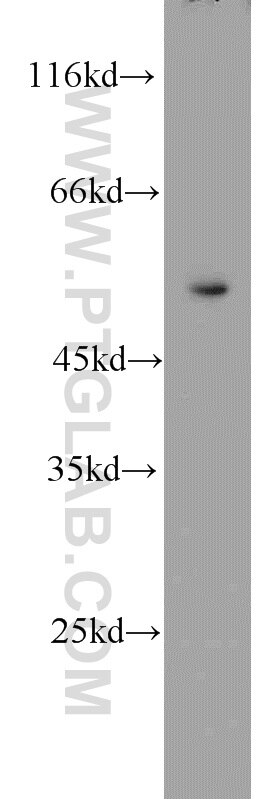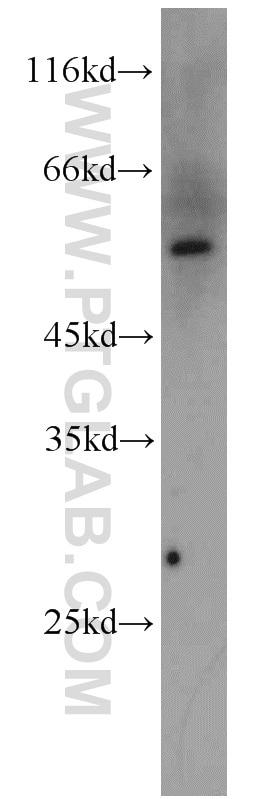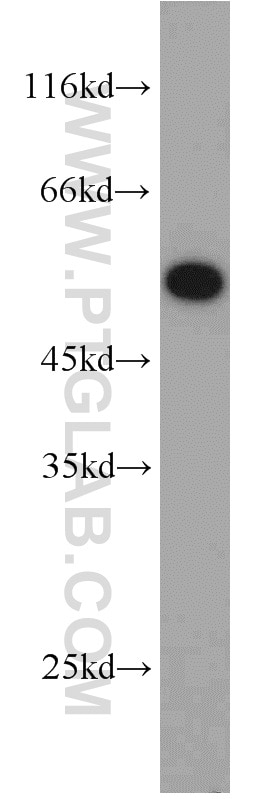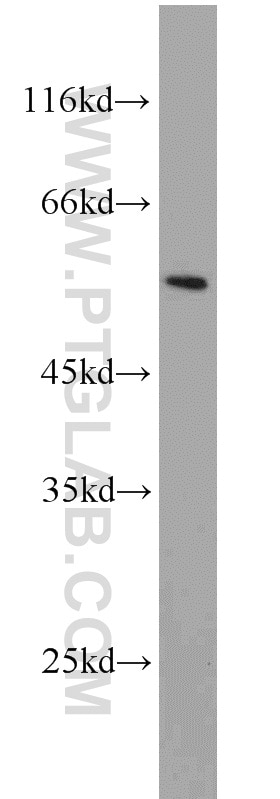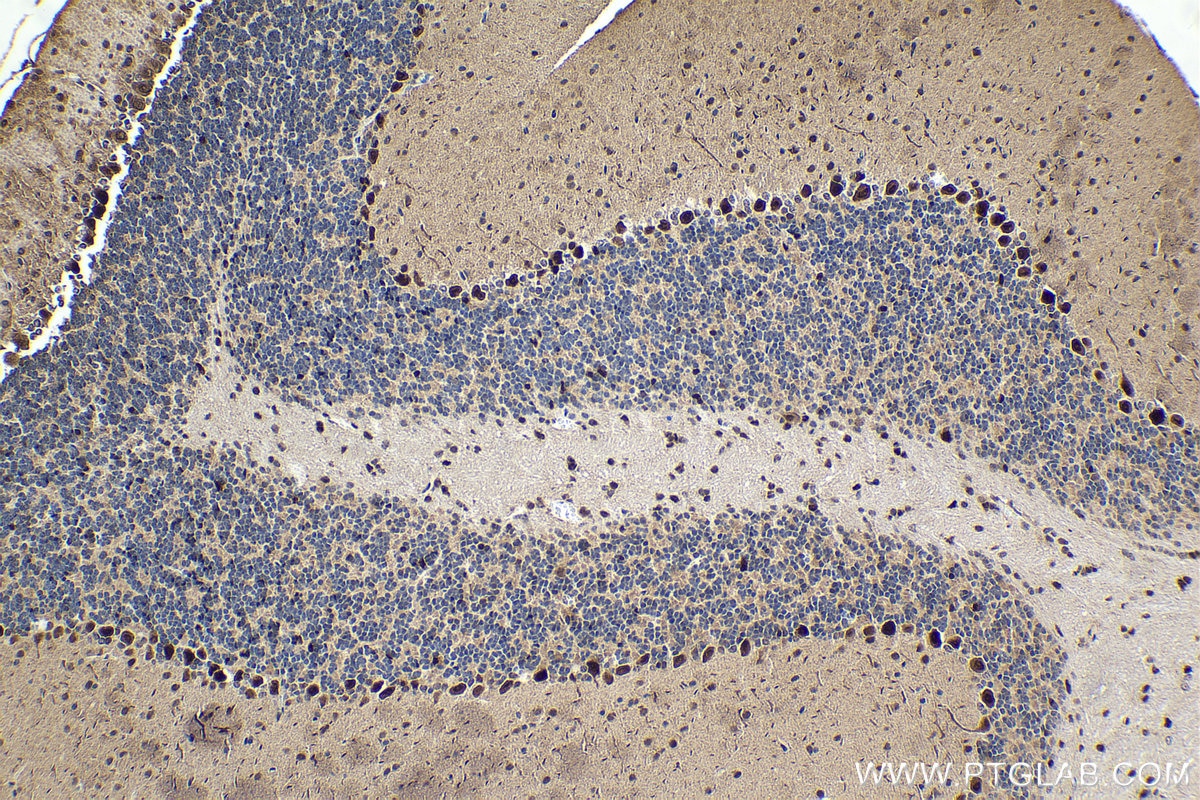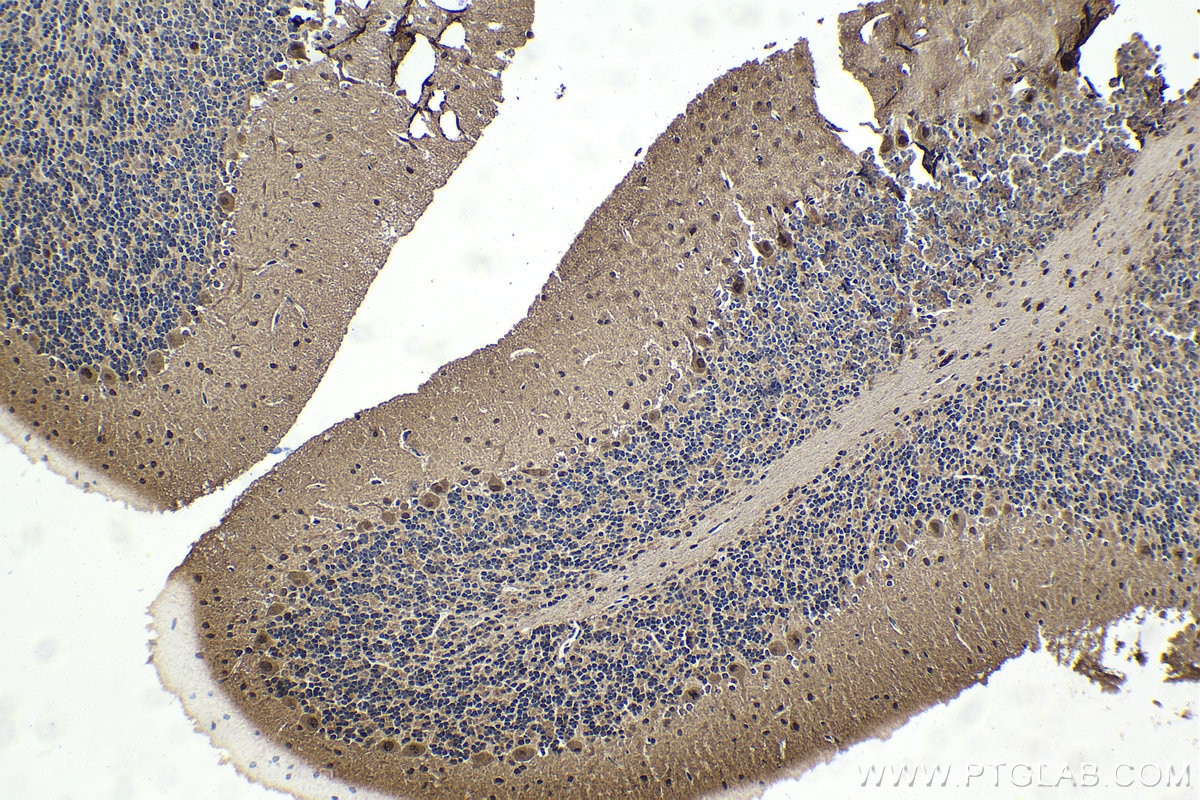Anticorps Polyclonal de lapin anti-PSMC1
PSMC1 Polyclonal Antibody for WB, IHC, ELISA
Hôte / Isotype
Lapin / IgG
Réactivité testée
Humain, rat, souris
Applications
WB, IHC, ELISA
Conjugaison
Non conjugué
N° de cat : 11196-1-AP
Synonymes
Galerie de données de validation
Applications testées
| Résultats positifs en WB | tissu cérébral de souris, cellules A549, cellules HeLa, cellules Jurkat, tissu pulmonaire de souris |
| Résultats positifs en IHC | tissu de cervelet de souris, il est suggéré de démasquer l'antigène avec un tampon de TE buffer pH 9.0; (*) À défaut, 'le démasquage de l'antigène peut être 'effectué avec un tampon citrate pH 6,0. |
Dilution recommandée
| Application | Dilution |
|---|---|
| Western Blot (WB) | WB : 1:500-1:2000 |
| Immunohistochimie (IHC) | IHC : 1:50-1:500 |
| It is recommended that this reagent should be titrated in each testing system to obtain optimal results. | |
| Sample-dependent, check data in validation data gallery | |
Applications publiées
| WB | See 6 publications below |
Informations sur le produit
11196-1-AP cible PSMC1 dans les applications de WB, IHC, ELISA et montre une réactivité avec des échantillons Humain, rat, souris
| Réactivité | Humain, rat, souris |
| Réactivité citée | rat, Humain, souris |
| Hôte / Isotype | Lapin / IgG |
| Clonalité | Polyclonal |
| Type | Anticorps |
| Immunogène | PSMC1 Protéine recombinante Ag1677 |
| Nom complet | proteasome (prosome, macropain) 26S subunit, ATPase, 1 |
| Masse moléculaire calculée | 49 kDa |
| Poids moléculaire observé | 52-57 kDa |
| Numéro d’acquisition GenBank | BC016368 |
| Symbole du gène | PSMC1 |
| Identification du gène (NCBI) | 5700 |
| Conjugaison | Non conjugué |
| Forme | Liquide |
| Méthode de purification | Purification par affinité contre l'antigène |
| Tampon de stockage | PBS with 0.02% sodium azide and 50% glycerol |
| Conditions de stockage | Stocker à -20°C. Stable pendant un an après l'expédition. L'aliquotage n'est pas nécessaire pour le stockage à -20oC Les 20ul contiennent 0,1% de BSA. |
Informations générales
PSMC1(26S protease regulatory subunit 4) is also named as p26s4 and belongs to the AAA ATPase family.The 26S protease is involved in the ATP-dependent degradation of ubiquitinated proteins. The regulatory (or ATPase) complex confers ATP dependency and substrate specificity to the 26S complex.
Protocole
| Product Specific Protocols | |
|---|---|
| WB protocol for PSMC1 antibody 11196-1-AP | Download protocol |
| IHC protocol for PSMC1 antibody 11196-1-AP | Download protocol |
| Standard Protocols | |
|---|---|
| Click here to view our Standard Protocols |
Publications
| Species | Application | Title |
|---|---|---|
Oncogene The degradation of p53 and its major E3 ligase Mdm2 is differentially dependent on the proteasomal ubiquitin receptor S5a. | ||
Cell Mol Life Sci The insulin-degrading enzyme is an allosteric modulator of the 20S proteasome and a potential competitor of the 19S. | ||
PLoS One Inactive USP14 and inactive UCHL5 cause accumulation of distinct ubiquitinated proteins in mammalian cells. | ||
Neuropathology Adenoviral expression of TDP-43 and FUS genes and shRNAs for protein degradation pathways in rodent motoneurons in vitro and in vivo. | ||
Cell Death Dis Dihydrolipoamide dehydrogenase (DLD) is a novel molecular target of bortezomib |
